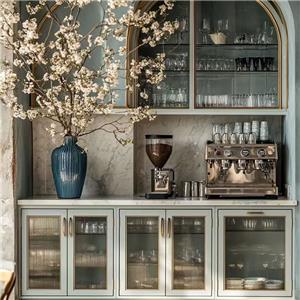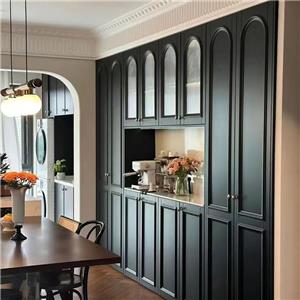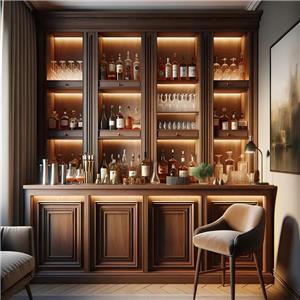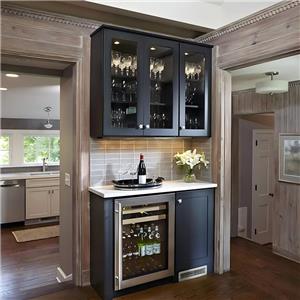How deep should a closet be to hang clothes?
In home storage, a closet is one of the essential furniture, and its design is directly related to the convenience of use and the effective use of storage space. A common question is: How deep should a closet be to hang clothes? This question seems simple, but it actually involves many factors, including the type of clothes, the size of the hanger, the way the clothes are hung, and the overall layout and space efficiency of the closet.
This article will explore the depth of the closet in depth to help readers understand how to design or choose a closet suitable for hanging clothes to maximize the storage function and usage experience.
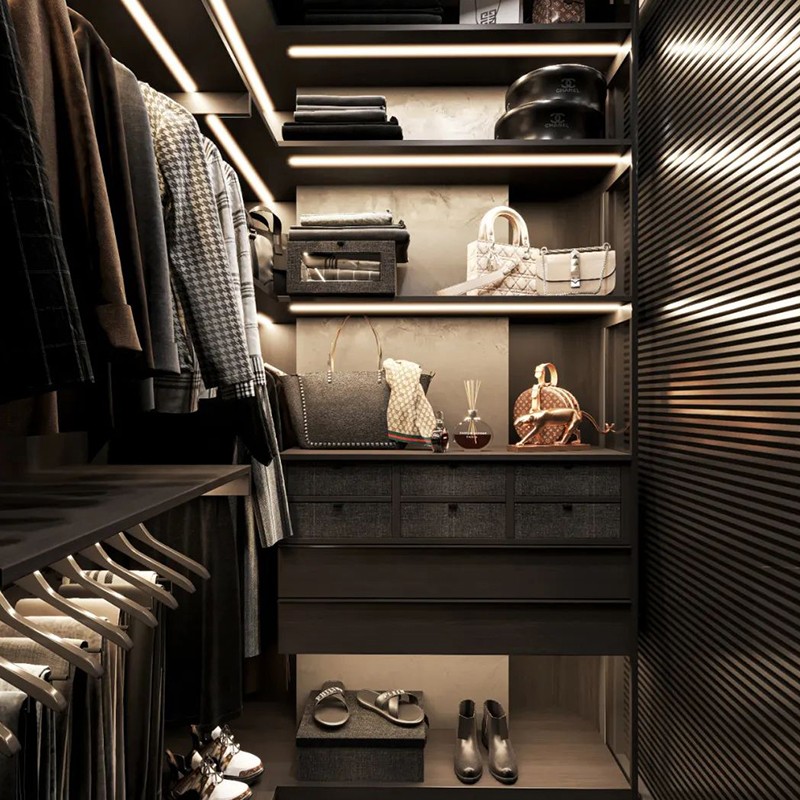
What is the depth of a standard closet?
Before discussing the appropriate depth of a closet, it is necessary to first understand a standard definition. Most modern closets are usually around 24 inches (about 61 cm) deep, which is considered to be the ideal size for hanging most clothes. This standard depth allows most clothes to hang on hangers without colliding with the closet door, nor will it make the clothes appear too tight and affect access.
However, the depth of a closet is not a fixed value. The actual required depth may vary depending on the layout of the house, personal needs, and the type of clothes. In some smaller spaces, the closet depth may be only 18 inches, while in larger rooms, the depth can reach 30 inches or more. Therefore, understanding the factors that affect the depth of a closet is crucial to designing a functional closet.
What are the factors that affect the depth of a closet?
Types of clothing
Different types of clothing require different depths when hanging. For example, heavy clothing such as jackets and coats require more space, while light clothing such as T-shirts and shirts take up less space. Here are some recommended hanging depths for some common clothing:
● Suits and jackets: These clothing items usually require a larger hanging space, and it is generally recommended that the closet depth be at least 24 to 28 inches (about 61-71 cm). These types of clothing have wider shoulders and thicker fabrics, and if the closet is too narrow, it may cause the clothing to be squeezed and deformed.
● Shirts and T-shirts: Relatively light shirts and T-shirts take up less space when hanging, and usually a depth of 18 to 22 inches (about 45-56 cm) can meet the needs. These clothing items generally do not generate much hanging pressure, so they can also be hung well in small closets.
● Dresses and long skirts: These clothes take up space not only in width, but also in length. If the closet is used to hang long clothes, in addition to the depth, the height of the closet should also be adjusted to avoid the hem of the skirt dragging on the ground.
Hanger size
The width of the hanger is another factor that directly affects the depth of the closet. The width of a standard hanger is about 17 to 20 inches (about 43-51 cm), plus the thickness of the clothes hanging naturally when hung, the depth of the closet must be large enough to accommodate the hanger and the clothes. Generally speaking, the thickness of the hanger and the clothes combined is about 22 inches (about 56 cm), so a 24-inch closet depth ensures that the clothes can hang freely without rubbing against the closet door.
If you are using specially made wide-shoulder hangers, especially hangers for hanging coats or suits, these hangers may be wider, even up to 22 to 24 inches (about 56-61 cm). In this case, the depth of the closet needs to be larger, and it is recommended to be at least around 28 inches (about 71 cm).
Clothes hanging method
The way clothes are hung also affects the design of the closet depth. For example, a closet with double rows of hanging clothes in front and back can maximize the use of space by increasing the depth. However, although this design increases the storage capacity, it may affect the convenience of taking clothes because the clothes at the back are not easy to take. Therefore, the double-row hanging design is generally recommended for closets with larger depths, while single-row hanging is more common for closets with standard depths.
Type of closet door
The way the closet door opens and closes also affects the actual depth of the closet. Sliding doors allow for a smaller depth of closets because they do not take up additional external space, which is very beneficial especially in compact spaces. Swing doors, on the other hand, need to consider the space requirements when the door is opened, so the effective depth of the closet interior may be limited when designing.
For swing door closets, special attention should be paid to the thickness of the door and the distance between the clothing hanging positions to ensure that the clothes are not squeezed when the closet door is closed. Sliding doors can make more efficient use of the internal space and reduce the need for closet depth.
Room layout
The size and layout of the room directly determine the available space of the closet. If the room is large, you can choose a deeper wardrobe to increase storage capacity. For wardrobes in small rooms or narrow corridors, you need to control the depth of the wardrobe as much as possible to avoid taking up too much walking space. In some small apartments, wardrobe designs with a depth of 18 to 20 inches are more common because they can effectively save space.
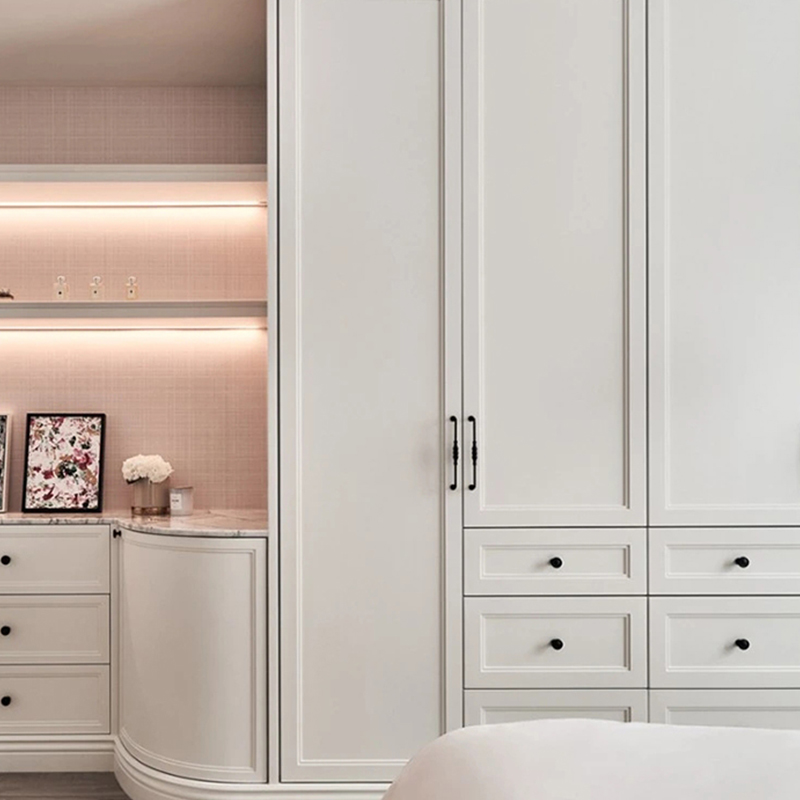
How do wardrobes of different depths affect the user experience?
18-20-inch deep wardrobe
For small families, a wardrobe depth of 18 to 20 inches is very common, especially in smaller bedrooms or compact corridors. Although this depth does not provide as much hanging space as a standard 24-inch wardrobe, it can still store thin clothes such as T-shirts and shirts well.
The advantage is that it saves space and the wardrobe will not appear too bloated, which is suitable for the layout of a small room. The disadvantage is that if you need to hang wider clothes such as coats and jackets, this depth may not be enough to provide sufficient space, and the clothes may rub against the wardrobe door or be wrinkled.
24-inch deep wardrobe
24 inches is a more standard wardrobe depth on the market, which can meet the needs of most families. For most types of clothing, a 24-inch depth provides enough space to hang and keep clothing flat. Especially for thicker clothing such as suits and coats, this depth ensures that they will not be squeezed or deformed.
In addition, a 24-inch wardrobe usually has enough internal space for layered design, such as installing storage racks above, or adding drawers below to improve space utilization.
28-30-inch deep wardrobe
This depth of wardrobe is usually used for luxury or custom wardrobes, especially for families with a large storage demand. A depth of 28 to 30 inches can accommodate almost all types of clothing, including coats and suits with the widest shoulders. This type of wardrobe can usually accommodate more clothing, while also providing better partition design, such as double-row hanging in front and back, multi-layer storage space, etc.
However, a wardrobe that is too deep can also bring some inconveniences. For example, it may not be easy to take clothes in the deeper part of the wardrobe, especially when the clothes are hung in double rows, the clothes in the back row may not be easy to see or take. Therefore, when designing a deep wardrobe, reasonable partition design and lighting are very important.
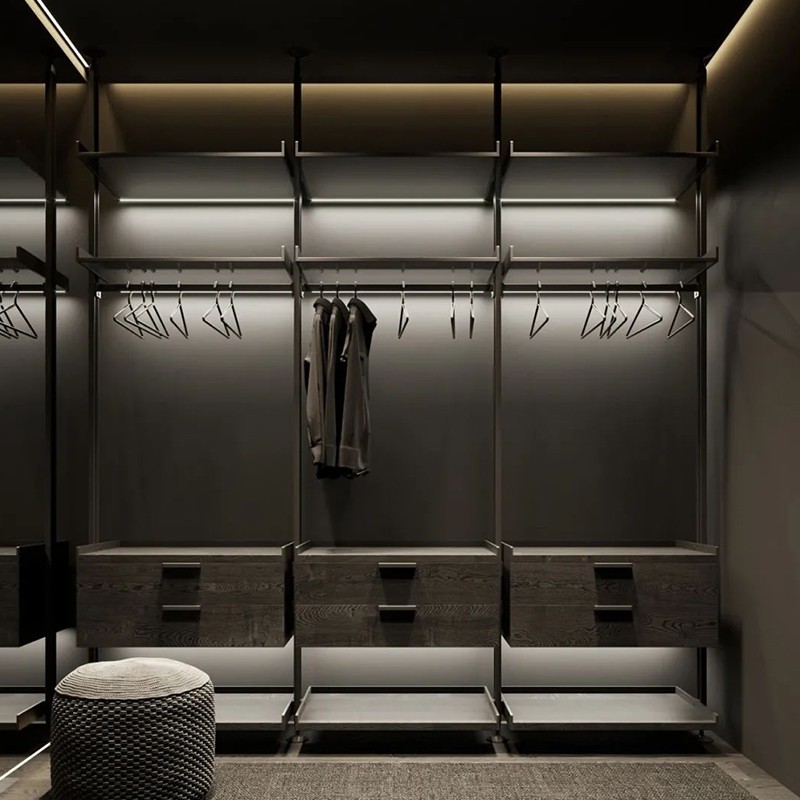
How to choose the right wardrobe depth according to personal needs?
The depth of the wardrobe should be determined according to personal needs and actual usage. The following are several typical demand scenarios and their recommended wardrobe depths:
Single user with a small number of clothes
For a single user with a small number of clothes, especially light clothes, a wardrobe of 18 to 22 inches deep can meet daily needs. Such users usually do not need to hang a large number of coats or suits, so shallower wardrobes can be selected to save space.
Family use, diverse clothing types
If it is a family wardrobe, and there are a large number of coats, suits, dresses and other wide or long clothes, a wardrobe of 24 to 28 inches deep is more suitable. This type of wardrobe can not only hang various types of clothes, but also add storage areas at the top or bottom of the wardrobe to store other sundries or clothes that are not often worn.
High-end customized wardrobe needs
For those users who have high requirements for storage functions and space utilization, a customized wardrobe of 28 to 30 inches deep can be selected. This type of wardrobe usually offers more storage space and is suitable for those who need to store a large amount of clothing or want to optimize the layout of the room through the wardrobe.

